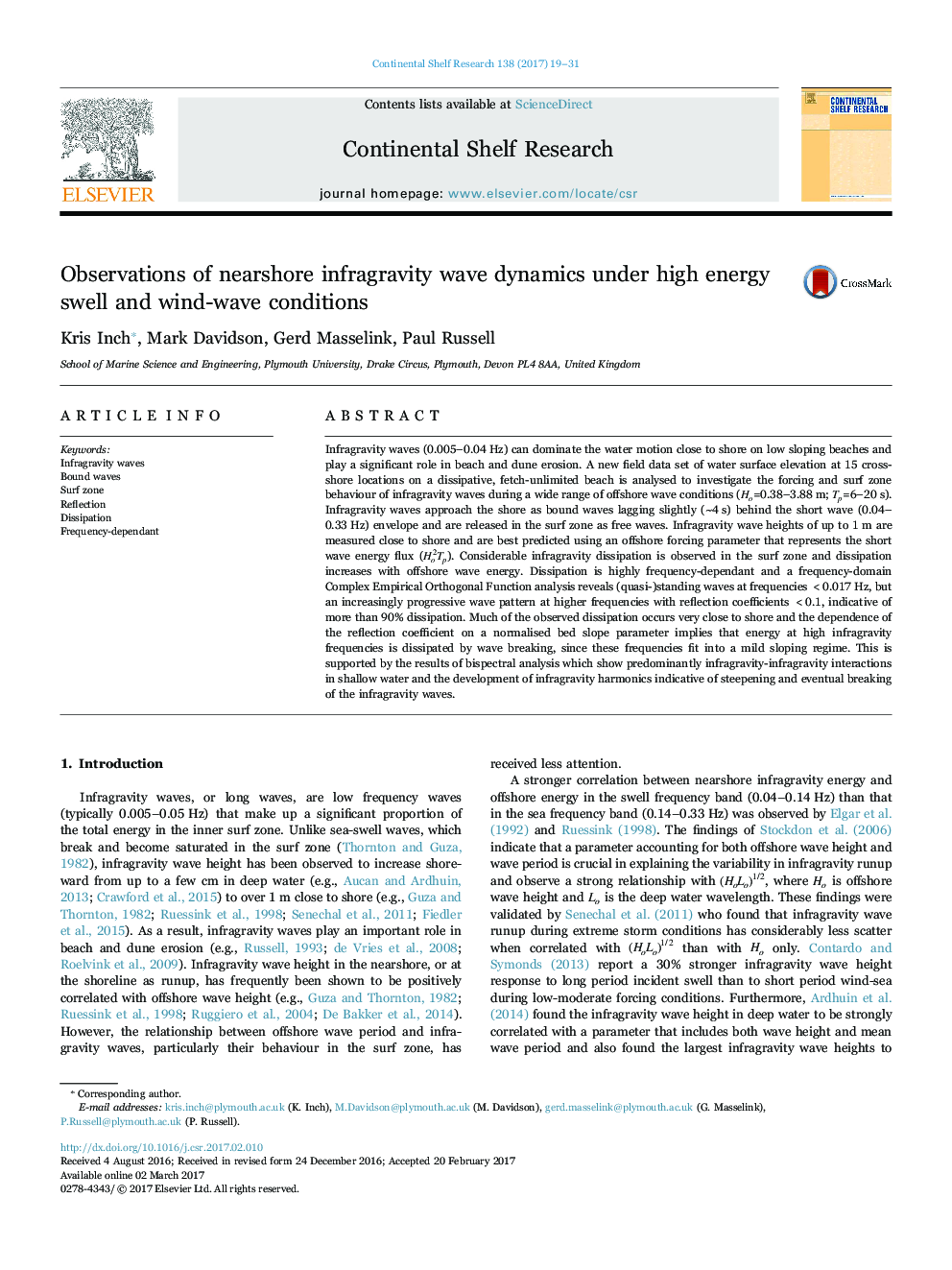| Article ID | Journal | Published Year | Pages | File Type |
|---|---|---|---|---|
| 5764564 | Continental Shelf Research | 2017 | 13 Pages |
Abstract
Infragravity waves (0.005-0.04Â Hz) can dominate the water motion close to shore on low sloping beaches and play a significant role in beach and dune erosion. A new field data set of water surface elevation at 15 cross-shore locations on a dissipative, fetch-unlimited beach is analysed to investigate the forcing and surf zone behaviour of infragravity waves during a wide range of offshore wave conditions (Ho=0.38-3.88Â m; Tp=6-20Â s). Infragravity waves approach the shore as bound waves lagging slightly (~4Â s) behind the short wave (0.04-0.33Â Hz) envelope and are released in the surf zone as free waves. Infragravity wave heights of up to 1Â m are measured close to shore and are best predicted using an offshore forcing parameter that represents the short wave energy flux (Ho2Tp). Considerable infragravity dissipation is observed in the surf zone and dissipation increases with offshore wave energy. Dissipation is highly frequency-dependant and a frequency-domain Complex Empirical Orthogonal Function analysis reveals (quasi-)standing waves at frequencies <0.017Â Hz, but an increasingly progressive wave pattern at higher frequencies with reflection coefficients <0.1, indicative of more than 90% dissipation. Much of the observed dissipation occurs very close to shore and the dependence of the reflection coefficient on a normalised bed slope parameter implies that energy at high infragravity frequencies is dissipated by wave breaking, since these frequencies fit into a mild sloping regime. This is supported by the results of bispectral analysis which show predominantly infragravity-infragravity interactions in shallow water and the development of infragravity harmonics indicative of steepening and eventual breaking of the infragravity waves.
Related Topics
Physical Sciences and Engineering
Earth and Planetary Sciences
Geology
Authors
Kris Inch, Mark Davidson, Gerd Masselink, Paul Russell,
